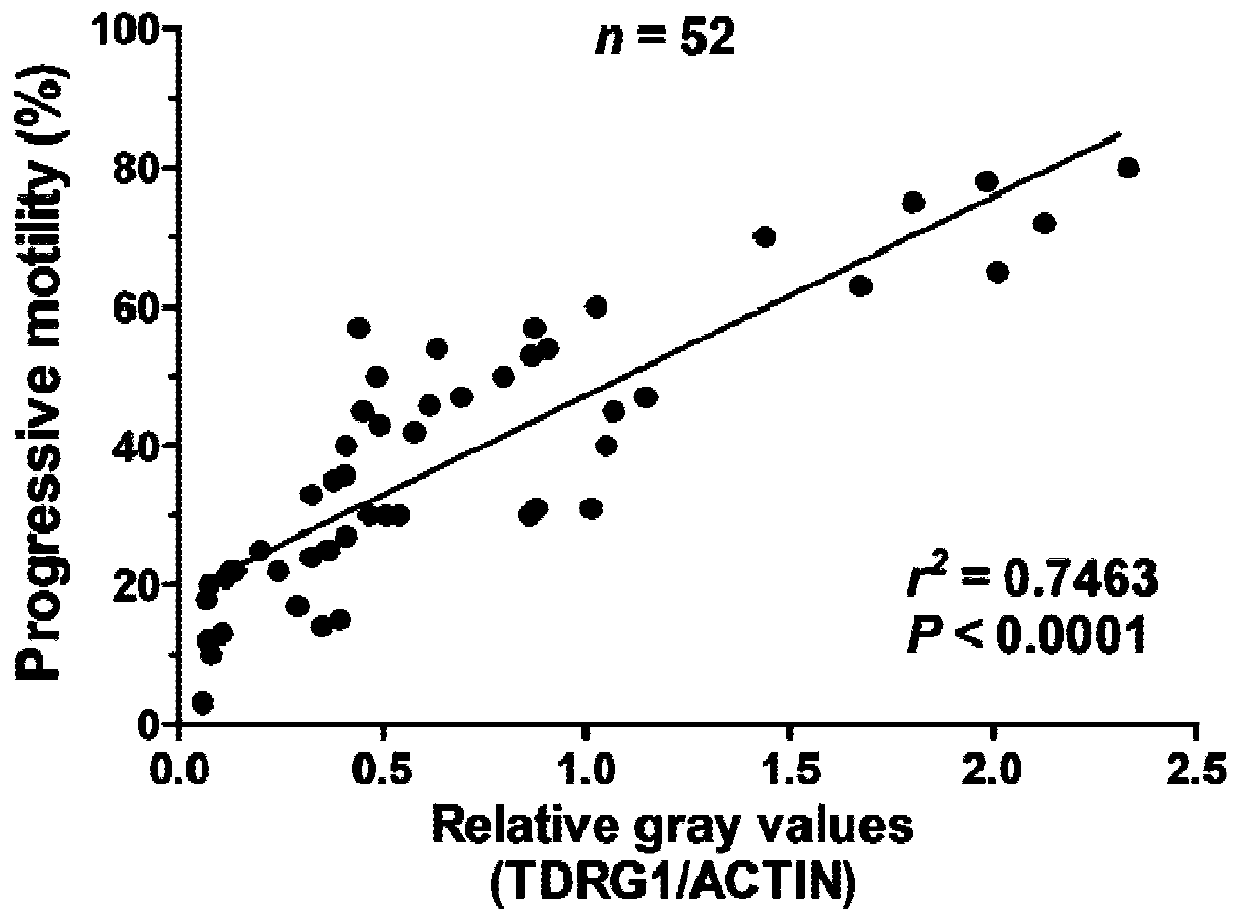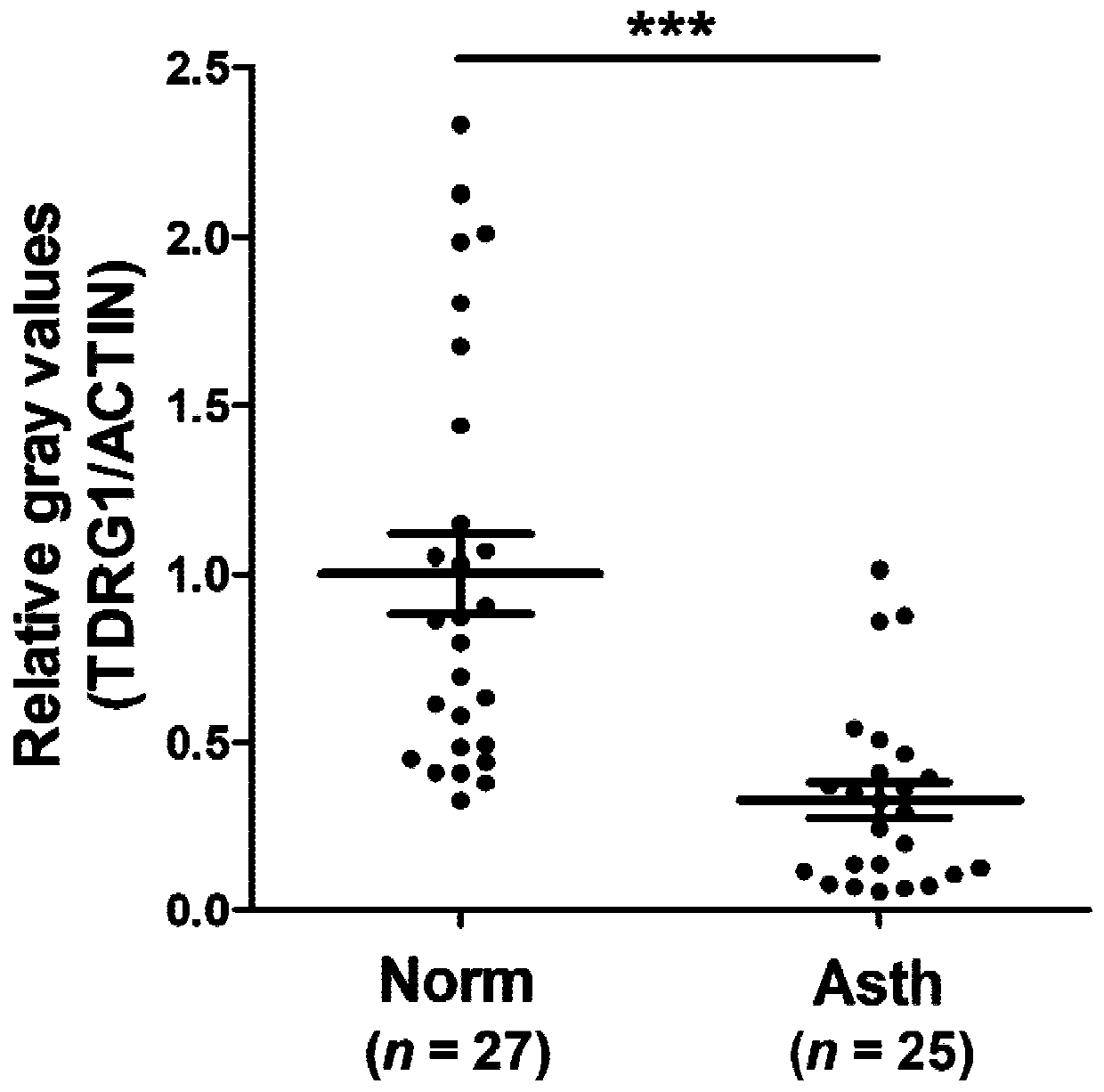Biomarker for diagnosing asthenospermia
A biomarker, asthenozoospermia technology, applied in the fields of biomedicine and molecular diagnosis, can solve problems that have not yet been developed and used clinically
- Summary
- Abstract
- Description
- Claims
- Application Information
AI Technical Summary
Problems solved by technology
Method used
Image
Examples
Embodiment 1
[0054] The TDRG1 content in the sperm of 27 normal people and 25 cases of asthenozoospermia was screened, and the TDRG1 content and forward motility rate of the normal and diseased groups obtained by relative quantitative analysis were analyzed by linear regression. The results are as follows: figure 1 (r 2 =0.7463, Pfigure 1 ), figure 2 shown. figure 1 In , TDRG1 content was found to be positively correlated with forward locomotor rate. figure 2 Among them, the lowest relative content of TDRG1 in normal human sperm was 0.32.
[0055]Therefore, the expression of TDRG1 in sperm has a high correlation with asthenospermia, and can be used as a biomarker for the diagnosis of asthenospermia. Specifically, asthenospermia with the relative content of TDRG1 lower than 0.32 can be defined as TDRG1 Asthenozoospermia with decreased content.
PUM
 Login to View More
Login to View More Abstract
Description
Claims
Application Information
 Login to View More
Login to View More - R&D
- Intellectual Property
- Life Sciences
- Materials
- Tech Scout
- Unparalleled Data Quality
- Higher Quality Content
- 60% Fewer Hallucinations
Browse by: Latest US Patents, China's latest patents, Technical Efficacy Thesaurus, Application Domain, Technology Topic, Popular Technical Reports.
© 2025 PatSnap. All rights reserved.Legal|Privacy policy|Modern Slavery Act Transparency Statement|Sitemap|About US| Contact US: help@patsnap.com


